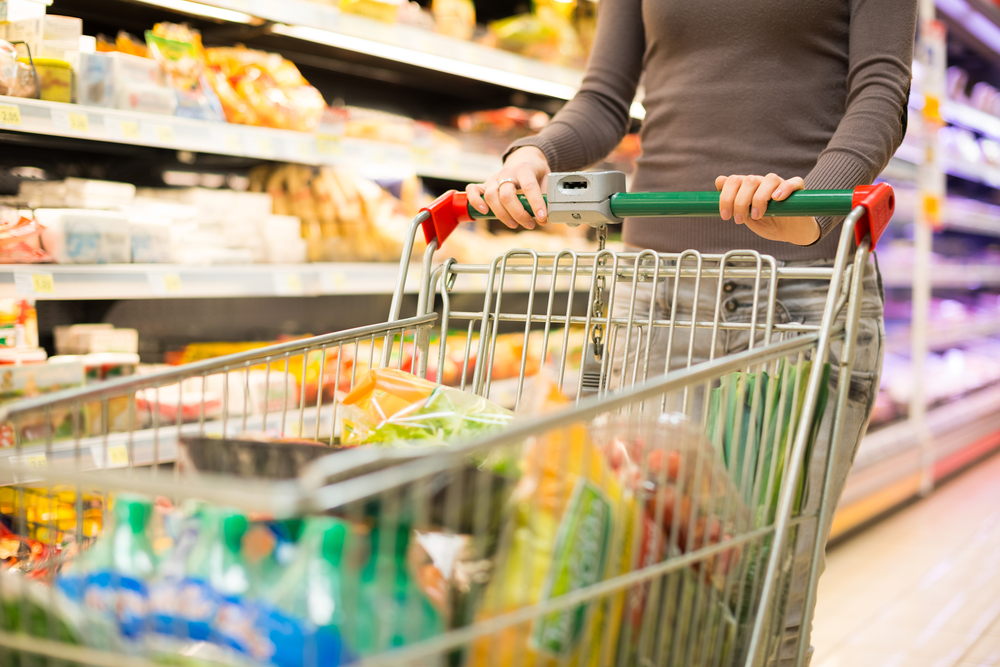Household Bills
Food prices rise at fastest rate in 45 years as inflation remains in double digits

The consumer prices index (CPI) rate of inflation has eased slightly to 10.1% in the 12 months to March 2023, down from 10.4% in February, but food prices have risen by nearly 20% in the year.
The inflation rate including owner occupiers’ housing costs (CPIH) rose by 8.9% in the 12 months to March 2023, down from 9.2% in February, according to the Office for National Statistics (ONS).
The ONS said the largest upward contributions to the annual CPIH inflation rate in March 2023 came from housing and household services (principally from electricity, gas and other fuels), and food and non-alcoholic beverages.
ONS figures show that prices for food and non-alcoholic beverages rose by 19.2% in the year to March 2023, up from 18.2% in February.
The annual rate for this category in March 2023 is the highest seen for more than 45 years. Indicative modelled estimates by the ONS suggest that the rate would have last been higher in August 1977, when it was estimated to be 21.9%.
The largest upward effect came from bread and cereals, where prices rose in the month to March 2023 but fell a year earlier, leading to an annual rate of 19.4% in the year to March 2023. This is the highest annual rate for bread and cereals on record.
The annual inflation rate for housing, water, electricity, gas and other fuels was 11.6% in March 2023, down from 11.8% in February. The main driver behind the change was liquid fuels, with prices of heating oil falling by 6.7% between February and March this year, compared with a rise of 44% between the same two months a year ago.
Relief but prices are still rising
Kevin Brown, savings specialist at Scottish Friendly, said: “Inflation has fallen, but this is good news for households only in the thinnest sense, because prices are still rising at an eye-watering pace, just slightly less than before. Overall prices are still rising by double digits and have been at such heights for eight months now.
“UK households are going to continue to feel the pain until either wages catch up in earnest, or price rises slow to normal levels. Essential components of household budgets such as groceries are still rising by 18% while other key areas of household spending continue to rise at painfully high rates too.
“Core inflation remains particularly stubborn at 6.2% – unchanged month-on-month. There’s a real risk of this kind of inflation becoming embedded. Once it is, then higher rates for longer become inevitable as a wage-price spiral takes hold. Falling fuel prices might provide some relief to households but this isn’t distributed evenly as not everyone drives regularly.”
Alice Haine, personal finance analyst at Bestinvest, said: “Softening inflation will come as a relief for households, offering hope that the financial squeeze is well and truly on the retreat, though a headline reading of 10.1% won’t deliver much relief to wallets just yet as prices are still rising at rates that would have seemed extraordinary at the start of last year.
“With prices on food and non-alcoholic beverages rising by a staggering 19.2% in the year to March, up from 18.2% in February – the highest annual rate for over 45 years – disposable incomes are still very much under the cosh. When you consider the additional challenges posed by higher mortgage costs, falling real incomes, higher taxes and the prospect that the Bank of England could still hike interest rates for the 12th time in a row next month, households should not start splashing the cash just yet.
“People still need to spend wisely by living within their means, avoiding expensive debt and saving and investing to shore up their financial futures.”